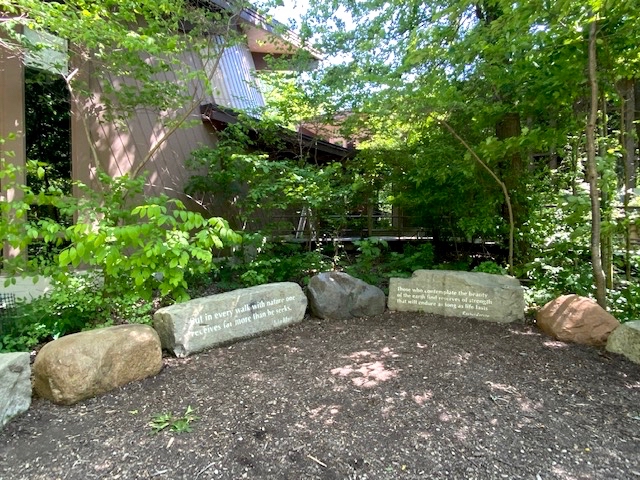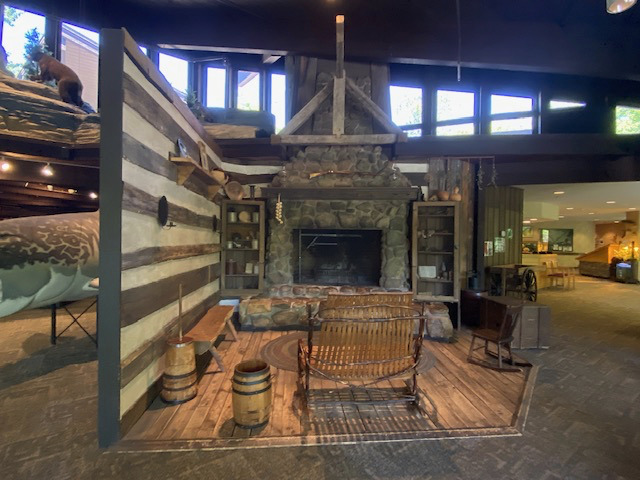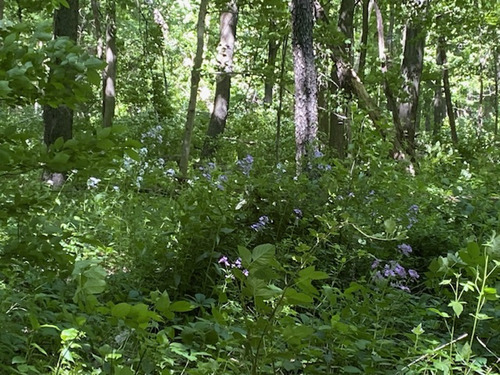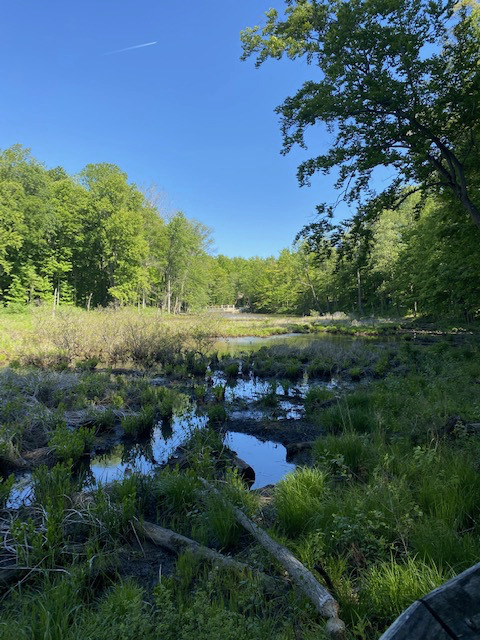
What a difference a month of growth can make in the Rocky River Valley! We last visited in late April— the trails were mucky, vernal pools hid young frogs and salamanders, downed trees crossed each other like pick-up sticks, and ephemeral spring flowers barely hid the leaves and mud forest floor.
At the end of May, we drove through deep green forest, the leaves on the trees no longer that sweet yellow-green that possesses them soon after they unfurl. We walked on dry trails through a quiet greenway of tall plants and wild purple phlox. A blue heron crossed the sunlight to land on the shoreline near the Rocky River Nature Center and blended in with the wooded pond scenery.
The summer solstice hasn’t arrived, but it felt like summer. And we were back home.
A recent Metroparks email to subscribers focused on their nature centers and summer concerts, not just on the trails. It is at the nature centers where humans connect with nature in a more meaningful way through interpretative exhibits. What’s your favorite nature center, and why?

My favorite is without question the Rocky River Nature Center. We used to live right up the hill in a little bungalow perched between the cliff and Mastick Road. Our children grew up going to the “Dunk House” on Sunday afternoons to try on the pioneer clothing and see the snakes and fish and imagine what the beaver’s house looked like under water. I took my Girl Scout troops out on the trails to show them what poison ivy and poison oak look like and to have them shout out the first signs of spring or the coming winter. Our daughters ran from the high school and down into the valley via Cedar Point Hill for cross country training. We hosted a wedding at the chapel at Frostville, the living history museum. And now our granddaughters marvel at the Duckleosteus replicas, play in HideAway Hollow (which wasn’t there when their mothers were young), and laugh at the way the box turtles move their heads.
Most of the time now, it’s just my husband Paul and me, escaping into the woods to see work by local artists displayed on the walls or to buy native plants. It’s rare that we climb the Fort Hill stairs to see the American Indian earthworks, but we like knowing that the area we traverse was once a place where canoes passed on waterways and where settlers made their home and is now preserved for us, our children, and generations of our family to come.
I bet you have some rich memories and good feelings about the Metroparks too.

Should you decided to visit the Rocky River Nature Center in North Olmsted, check out Ken Long’s art on the Gallery Wall and make a point of looking for hummingbirds at the feeders outside the viewing windows. Find time to participate in the Salamander Survey on Thursday 6/1, create a rustic twig mirror on Saturday 6/3, or take a songbirds hike with a naturalist on Sunday 6/4. Events can be found here.
I’m going to check out the other nature centers in the coming weeks. We’ve explored Brecksville, Canalway, and North Chagrin Nature Centers, and I think it’s about time we drove over to the Watershed Stewardship Center. One of the great things about the Emerald Necklace park system is that it’s all easily accessible.
And capable of providing wonderful memories.

One Response to “Cleveland Metroparks Connect Humans with Nature”
Cynthia Eging
Always enjoy your articles and your pictures!! Miss your classes!